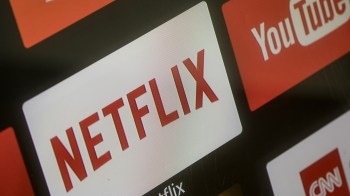The TV Everywhere initiative isn’t getting anywhere
Share Now on:
The TV Everywhere initiative isn’t getting anywhere
You wouldn’t think it would be that hard for a cable provider to just put cable TV content online. I mean, web companies live stream stuff all the time, right? And certainly big companies like Netflix and Amazon and Hulu have made large scale video streaming work just fine. Yahoo! is getting in on the act lately too, launching a new comedy channel.
And it’s true, the technology isn’t all that tricky. What’s tricky is the legal and financial wrangling. A few years ago, faced with the looming presence of Netflix and other video streamers, two cable giants, Comcast and Time Warner, hatched a plan to keep customers from cutting the cable. They called it TV Everywhere and the idea was to provide online viewing to cable customers. So if you paid your monthly cable bill, you’d get to see whatever you wanted on either the TV, through that coaxial cable that was installed, or on your computer, phone, or tablet.
“The goal essentially was to keep a new generation of people paying those cable bills. As long as you wanted to watch online video, you had to keep paying for your offline cable subscription,” says Sam Schechner, who wrote about TV Everywhere’s track record recently in the Wall Street Journal.
Schechner says the pitch to users was that they would get all these extra places to watch TV at no extra cost. “But the sell to business is that if people get their video over the Internet without paying for cable, it will deprive the TV networks and the cable operators of a lot of money that consumers pay every year,” he says. So TV Everywhere was to be a firewall against the Netflixes of the world.
But coming up with something that sounds good in theory is way easier than something that works well in practice. Three years after it was conceived, TV Everywhere is going nowhere, in part because the cable providers and the cable channels can’t see eye to eye. “You’d take say Comcast, they have to get rights from the cable networks from like USA, which is actually now controlled by Comcast, or FX or you know, The Discovery Channel,” Schechner says. “They have to negotiate those rights channel by channel in order to beam it to your iPhone. Fair enough, that sounds like good idea. Everyone in theory says that they’re on board with it. But then you talk to a media company like Discovery Communications and they say this is a value to you, so we want to be paid a little bit extra.”
Ah yes. Money. Cable providers could pay that money and see TV Everywhere as a loss leader, a way of keeping customers happy at the expense of their own profits. Or they could try to charge the customers extra, which might not go over all that well. Instead, it’s just been a series of broken down negotiations.
Jennifer Holt teaches Film and Media Studies at University of California, Santa Barbara. She says the students she meets get all their entertainment from online. “But they are still seen as abhorrent group by (cable) executives who always talk about how once they get out of college, they’re going to come back to the couch. I disagree with that. I think these are ingrained habits and we watch our students who have grown up with computers. They aren’t about to abandon their ‘I want it right now, I don’t want to wait until Thursday at eight o’clock’ kind of model.”
The cable industry still has advantages: money, big stars, an actual cable piped into most American homes. But executives are nervous, says Holt. “They’re afraid of people cutting their cable subscription and then piecing together content themselves from these different streaming platforms that are beginning to beef up their offerings.”
Holt expects cable to stay huge for a long time to come. But she says one big hit show, a Sopranos, a Seinfeld, could be enough to turn the tide in a hurry.
Also in this program, a new tool for writers who need a kick in the pants to get their writing done. Write Or Die is an app for iPad, PC, and the web that is very harsh on you if you fail to write as much as you said you would or even if you pause for what it sees as too long of a time.
There’s a lot happening in the world. Through it all, Marketplace is here for you.
You rely on Marketplace to break down the world’s events and tell you how it affects you in a fact-based, approachable way. We rely on your financial support to keep making that possible.
Your donation today powers the independent journalism that you rely on. For just $5/month, you can help sustain Marketplace so we can keep reporting on the things that matter to you.


















